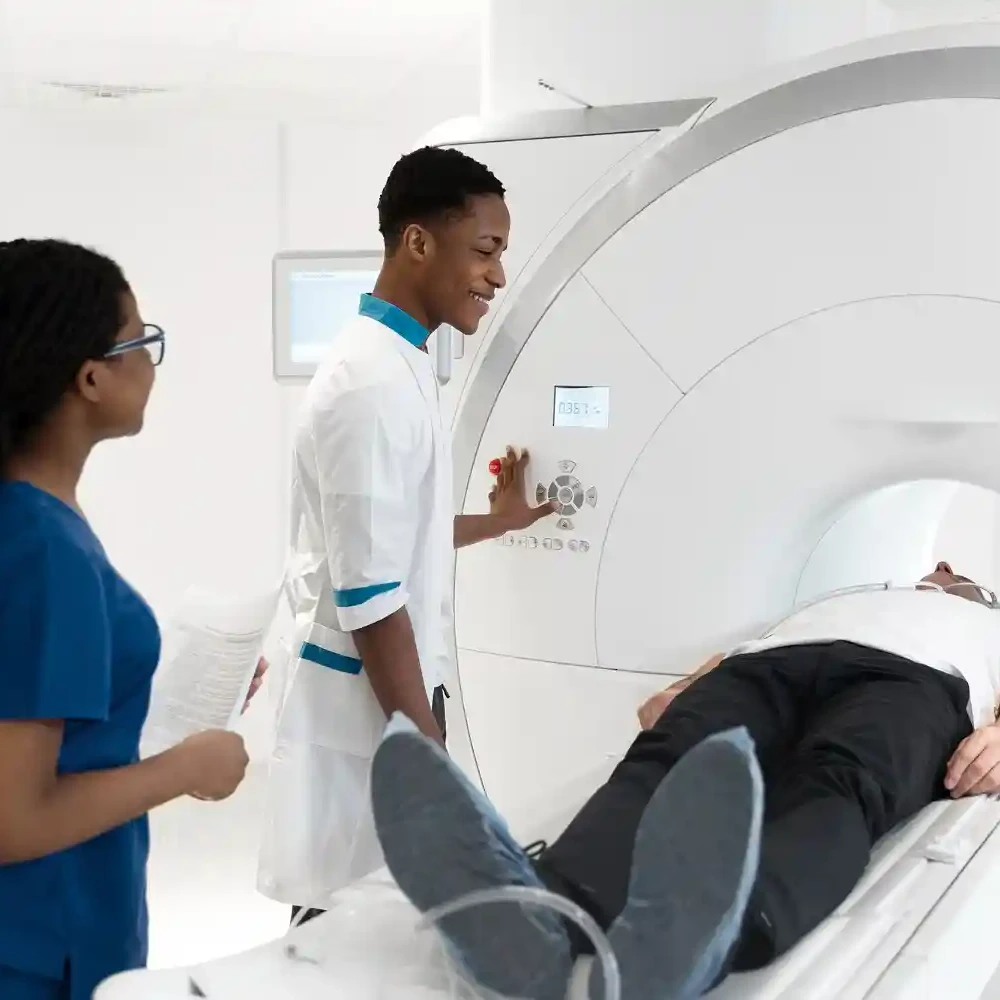An MRI scan, which stands for Magnetic Resonance Imaging scan, is a type of medical test that falls under the imaging category.
The scan is performed using the MRI machine, which works under some principles involving the use of large magnets to visualize the inner structures of the body to detect what is wrong with you.
These images are then viewed on the computer screen, after which they are printed out and interpreted by doctors trained to do so.
- It is a painless procedure and is said to be a non-invasive test because no cut is made through your skin, nor is any space in your body entered.
- It is quite expensive and hence not routinely requested, or else your doctor thinks it is essential to improving your health.
- It is also time-consuming and is not used for emergency cases.
Reasons to do an MRI Scan
Though quite expensive, there are cases where you would be required to have an MRI scan performed, including:
- Injuries of the brain and spinal cord
- Increased head size in babies
- Masses in various parts of the body
- Certain types of heart problems
- Injuries to the joints, such as the back and knee
- Diseases of the liver and other abdominal organs
- Some cases of abnormal or irrational behaviors
- Breast cancer screening for women who face a high risk of breast cancer
- In patients with cancer, check for evidence of spread to other parts of the body
This list is, however, not exhaustive.
The benefits of an MRI scan relate to its precise accuracy in detecting structural abnormalities of the body; hence, in cases where other scans haven’t revealed the problem, an MRI scan may be requested.
What to do before the scan
- Your doctor, who requested the investigation, will explain the need to you, answer your questions, and schedule the test.
- As initially stated, the machine makes use of a large magnet; therefore, if you have any metallic objects, tattoos, or implants in your body, you should notify your doctor to find another test for you because the MRI is dangerous for you. This is because the magnet in the machine tends to move the metals and can injure you in the process.
- You are required to remove all your jewelry before going into the MRI suite for the same reason. In most cases, you will change into a hospital gown.
- You should also notify your doctor if you experience an irrational fear of enclosed spaces or being trapped. That’s because you are supposed to lie still for a while in a closed area within the MRI magnetic tube during the MRI scan. To help relieve this sensation, a mild sedative may be given before the MRI scan.
- Occasionally, you may be given some drugs to help you relax, even if you don’t have such a fear. This is because the test requires you to lie still for a while to get clear images.
- Although the MRI machine is not known to emit harmful substances like the X-ray, do inform your doctor if you are pregnant, especially during the early stages of pregnancy, because those are critical moments for the baby’s development. More so if an injection dye is to be given to help in visualizing the structures of the body properly.
How is the scan done?
- It lasts for about 20 minutes to an hour, depending on the part of the body being imaged.
- You will be attended to by a doctor who specializes in medical imaging and works with the technicians and other staff to make you comfortable throughout the test; they all make up the MRI staff.
- The doctor will then talk you through the MRI scanning process and answer any questions you may have about the procedure.
- Once you have entered the scanning room, the doctor will help you onto the scanner table to lie down and will ensure that you are as comfortable as possible by providing blankets or cushions.
- You will be expected to lie still for the duration of the test and, in some cases, hold your breath for a few seconds.
- At both ends, the magnet is open, with the scanned part of the body positioned in the center of the magnet.
- During the actual imaging, you will hear a loud banging noise. You will be provided with earplugs or headphones to minimize the noise during the procedure.
- You will be provided with an alarm button to alert the doctor of any discomfort you may experience at any point during the MRI exam.
- Once in the scanner, the doctor will communicate with you via the intercom to make sure that you are comfortable. It is customary that the MRI staff will be nearby during the MRI scan.
- Some MRI exams may require an injection of a substance called dye through your veins to enhance the images. Inform the doctor if you experience any discomfort during the injection.
What to do after the scan
After the scan, the doctor will examine the images to ascertain if any more are required.
If satisfied, the patient can go home.
A report of the scan and the scan films will be sent to the requesting doctor (your doctor).
You will be asked to make an appointment with your doctor to discuss the results.
Possible outcomes of the scan
In a case where a dye is injected into your vein, it can cause nausea, headaches, or allergies.
An MRI scan produces detailed pictures of internal body structures and any abnormalities in different forms and orientations, and the result gives the doctors an idea of what is wrong with you.
Interpretation of scan result

After the MRI scan is completed, the computer generates visual images of the area of the body that was scanned.
These images can be transferred to hard copies called films.
A radiologist is a doctor who is specially trained to carry out the MRI test and interpret images of the body.
The interpretation is transmitted in the form of a report to your doctor, who requested the MRI scan.
Your doctor can then discuss the results with you.
Different doctors in different areas of medicine can also interpret the result to some extent.
Conclusion
MRI is advancing technology in the imaging department as it goes a long way in detecting even subtle changes in the body that are missed by conventional X-rays and other tests.
It is more detailed if a dye is injected into the veins for a better outline.
It is a vital tool that every higher-level health institution ought to have, though it is expensive.
Hopefully, this article has been able to give you an insight into an MRI scan.
If you need more clarification, do reach out to me in the comments section.
Cynthia Chisom Edeh
Cynthia Chisom Edeh is a Medical Doctor, Author, Content Developer and Health Awareness Creator. She is also a Girl Child Advocate and Health Volunteer.
Primary Goal is to inform the layman.



